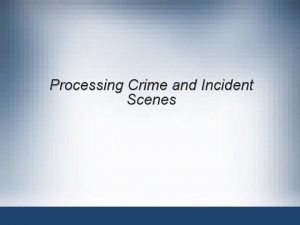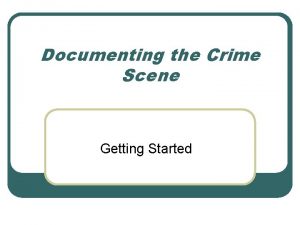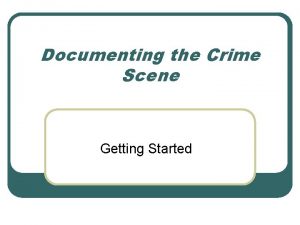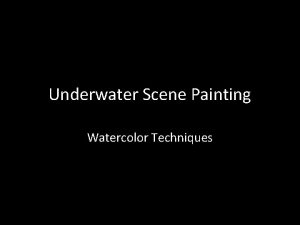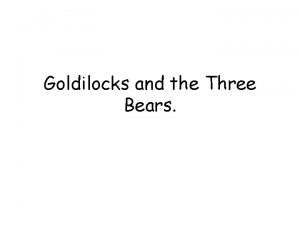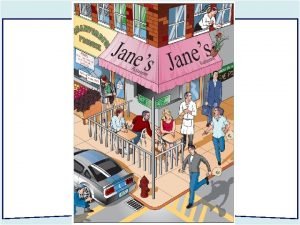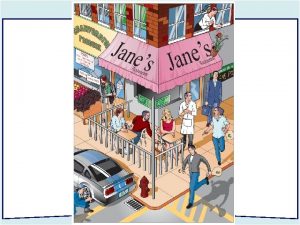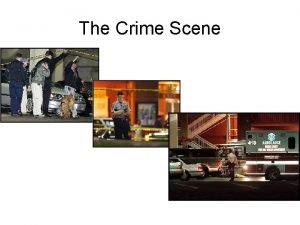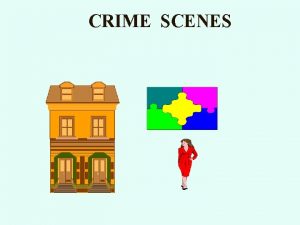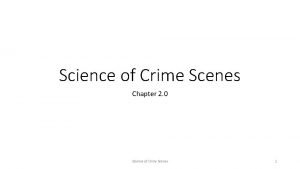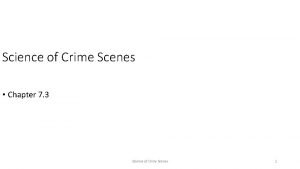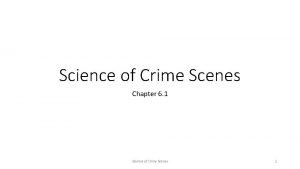Science of Crime Scenes Chapter 3 4 Science









- Slides: 9

Science of Crime Scenes Chapter 3. 4 Science of Crime Scenes 1

Non-forensic Personnel: Superiors, Officials, the Media • At a crime scene, you will encounter both the police and the news media • Both groups will want you to provide them with information about the events • How the two groups ask for that information will be very different • What information you give (if any) to the police or the news media is greatly influenced by your relationship with them • Both groups use words and communicate very differently Science of Crime Scenes 2

Example: Theft • Police • Stealing: Theft when the perpetrator has legal access, like from an open store • Breaking and entering: Theft when the perpetrator gains unlawful entry • Burglary: Breaking and entering at night • Media • Theft = stealing = breaking and entering = burglary Science of Crime Scenes 3

Example: Wording • Police • “A deceased woman who had suffered blunt trauma was discovered in her residence this morning. Police are actively investigating the crime. ” • Media • “A caregiver was shocked this morning to find an elderly widow on the floor of a small apartment. The victim showed obvious signs of having been brutally bludgeoned to death. This is the second such incident in this apartment complex in the last year. The police have no suspects at this time. ” Science of Crime Scenes 4

Public perceptions about crime in the U. S. • Opinion surveys regularly find that Americans believe crime is up, even when the data show it is down • In 21 Gallup surveys conducted since 1989, a majority of Americans said there was more crime in the U. S. compared with the year before • But violent and property crime rates were generally down • In a Pew Research Center survey in late 2016, 57% of registered voters said crime had gotten worse since 2008, even though Bureau of Justice Statistics and FBI data show that violent and property crime rates declined by double-digit percentages during that span Science of Crime Scenes 5

Science of Crime Scenes 6

Public Information Officers • During an active crime scene investigation, the CSI will obviously not be able to speak directly with the media (or the public) • In most police agencies that role is performed by a professionally trained Public Information Officer (PIO) • If the PIO holds timely briefings and provides updated information, then most of the media will not interfere with the crime scene or jeopardize the investigation • The PIO also assists the CSIs by keeping superiors and officials informed Science of Crime Scenes 7

Media everywhere • CSIs may encounter photographers at crime scenes particularly at outdoor scenes • The media should not be allowed close enough to record sensitive pictures that may be embarrassing or distressing to family members of the victim • News media helicopters and drones flying overhead recording images can also be expected at high profile crime scenes Science of Crime Scenes 8

15 Minutes of Fame • At crime scenes, a crowd of onlookers will quickly form. Such crowds also attract the media. • In the form of their cell phone, each member of that crowd has a camera, and a video and audio recording device, that are capable of live broadcasting throughout the world • CSIs must be on guard constantly Science of Crime Scenes 9
 Processing crime and incident scenes
Processing crime and incident scenes Sketch all serious crime and crash scenes:
Sketch all serious crime and crash scenes: Sketch all serious crime and crash scenes:
Sketch all serious crime and crash scenes: How to paint underwater scene watercolor
How to paint underwater scene watercolor Did paris love juliet give evidence
Did paris love juliet give evidence Macbeth act 1 scene 1 setting
Macbeth act 1 scene 1 setting Goldilocks scene
Goldilocks scene Dr faustus act 2 summary
Dr faustus act 2 summary The passion of the christ behind the scenes
The passion of the christ behind the scenes Preface from behind the scenes
Preface from behind the scenes
